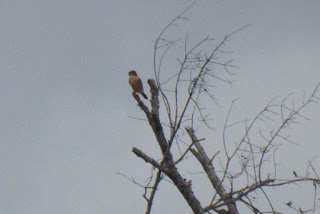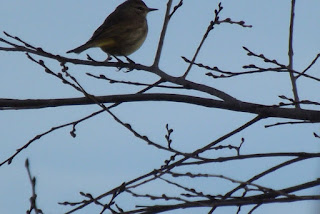The 101st Christmas Bird Count, back in December 2000, was my introduction to both my local Audubon Society chapter and the wider world of birdwatching. Prior to that experience, I had birded mostly around my own yard in rural Mississippi, and certainly didn’t know anyone else who shared my avid interest in birds. But all of that changed. The count leader assigned my mother (who did the driving) and me to an area that included a portion of the local reservoir and dam, as well as the neighborhoods adjacent to it. I remember standing at our first stop on the route, shivering in my heavy coat and thick gloves as I observed Bufflehead ducks and American Coots bobbing in the waves near the spillway. Fortunately, the temperature increased considerably as the day progressed, as did the numbers on my bird checklist and my appreciation for this challenging but enjoyable form of citizen science. What had originally been only a hobby for me was now a way to make a real contribution to ornithology.
The Christmas Bird Count is one of the longest-running wildlife censuses. The period of December 14, 2022 through January 5, 2023 marks the 123rd time that the count has been conducted. The count circles, of which there are several per state or province, measure 15 miles in diameter, and each count compiler assigns portions of the count area to the various groups or individuals to cover. The rules for counting are fairly simple: all observed, identified wild birds should be included in the tally, and the same area cannot be surveyed more than once. |
| American Kestrel seen on Noxubee NWR CBC, December 17, 2016 |
 |
| One of the most common songbirds seen in the winter months in North America: the White-throated Sparrow. (Fayetteville, Arkansas) |
Considering how simple the CBC really is, how valuable could its results be to ornithology? In some cases, more valuable than one might think. For example, Niven et al. (2004) used CBC data to examine population changes in the bird species that breed in the boreal forests of Canada and Alaska and winter farther south. Some of these boreal species, such as Merlins and Palm Warblers, showed population increases. Populations of several other species were relatively stable, while some species, including Harris’s Sparrows, Rusty Blackbirds, and Northern Shrikes, had declined significantly. The researchers noticed that the CBC winter population trends paralleled those in the data from the Breeding Bird Survey, another long-running bird census.
 |
| Merlin at Choctaw Lake, MS, December 31, 2015. |
 |
| A rare (for the region) Palm Warbler seen on Noxubee NWR CBC, December 16, 2017. |
References:
Caffrey, C. and Peterson, C. C. 2003. Christmas Bird Count data suggest West Nile Virus may not be a conservation issue in the northeastern United States. American Birds 57:14-21.
Link, W. A., Sauer, J. R., and Niven, D. K. 2006. A hierarchical model for regional analysis of population change using Christmas Bird Count data, with application to the American Black Duck. The Condor 108:13-24.
National Audubon Society, Christmas Bird Count Compiler Resources. Retrieved December 30, 2017, from http://www.audubon.org/christmas-bird-count-compiler-resources.
Niven, D. K., Sauer, J. R., Butcher, G. S., and Link, W. A. 2004. Christmas Bird Count provides insights into population change in land birds that breed in the boreal forest. American Birds 58:10-20.
Weidensaul, S. 2007. Of a Feather. Harcourt, Inc., Orlando, Florida, USA.
